幼児教育の世界には、さまざまな教育理念やアプローチが存在しています。その中でも特に有名なのが、「レッジョエミリア」「シュタイナー(ウォルドルフ)」「モンテッソーリ」という三つの教育法です。いずれも子どもを中心に考え、独自の視点で教育環境を整えているため、多くの保育士や親から関心を集めています。
しかし、名前は聞いたことがあっても、「実際どう違うの?」「うちの子に合うのはどれだろう?」と疑問を持つ方も多いのではないでしょうか。本ブログでは、この三つの教育法の特徴や共通点・相違点を分かりやすく整理し、各アプローチが大切にしている理念や具体的な実践例をご紹介します。違いを理解することで、子どもに合った教育環境を選択する参考にしていただければ幸いです。
1.レッジョエミリア・アプローチの理念と特徴
(1) 子どもが持つ「100の言葉」
レッジョエミリア・アプローチは、イタリアのレッジョエミリア市で生まれた幼児教育法です。最も大切にしている考え方の一つが「子どもには100の言葉がある」という有名な詩に象徴されるように、子どもの表現力を多角的にとらえる視点です。
絵、音楽、工作、身体表現など、子どもが持つ多様な「言語」を尊重し、それらを通じて探求し、学んでいけるようにサポートします。大人は「教える人」というより「ファシリテーター」として、子どもたちの興味や好奇心を深められるような環境を用意しながら、一緒に学びのプロセスを楽しむことが特徴です。
(2) 対話と共同作業が鍵
レッジョエミリアでは、子ども同士、そして子どもと大人の「対話」によって学びが深まると考えられています。教師が一方的に知識を教えるのではなく、子どもの疑問や発想を引き出すように問いかけを行い、そこから新たな気づきが生まれるようなアプローチを重視します。
また、アート活動を中心にした「プロジェクト型保育」や「アトリエリスタ(美術の専門家)の存在」など、共同作業や多面的な表現をサポートする仕組みが整っていることも特徴的です。
2.シュタイナー(ウォルドルフ)教育の理念と特徴
(1) 全人的な成長を目指す
シュタイナー教育(ウォルドルフ教育)は、オーストリアの思想家ルドルフ・シュタイナーの哲学をもとに始まった教育法です。大きな特徴は「頭(思考)・心(感情)・手(意志)」の三位一体を調和させることで、子どもの全人的な成長を目指す点にあります。
学びは単なる知識の習得ではなく、子どもの情感や内面のリズム、身体的な発達段階も大切にしながら進められます。「魂の発達」というスピリチュアルな側面にも着目しているのが、シュタイナー教育のユニークな点と言えるでしょう。
(2) 芸術的・感覚的なアプローチ
シュタイナー教育の現場では、芸術活動や体験学習がカリキュラムの重要な要素となっています。水彩絵の具や蜜ろうクレヨン、音楽、演劇などを積極的に取り入れ、子どもの感性や創造力を育むことを重視します。また、自然素材のおもちゃや学習道具を使い、色彩や音・リズムなど感覚に訴える教育環境が整えられます。
授業だけでなく、1日のスケジュールや季節の行事も「リズム」を大切にし、子どもの内面の成熟を段階的に支えていくのが特徴です。
3.モンテッソーリ教育の理念と特徴
(1) 「子どもには自分で成長する力がある」という前提
モンテッソーリ教育は、イタリアの医師であり教育家でもあったマリア・モンテッソーリによって確立された教育法です。最も重要な考え方は、「子どもは自発的に発達し、自分の力で成長する存在」という前提を置くこと。大人はあくまでもサポーターであり、子どもが自律的に活動できる環境を整えるのが役割です。
たとえば、モンテッソーリ教育の教室では子どもの身長や力に合わせた道具が用意され、子どもは自分で必要な教材や作業を選び、集中して取り組むことができるよう工夫されています。
(2) 整理された「おしごと」環境
モンテッソーリ教育では、活動を「おしごと」と呼び、一つひとつの作業が「自分でできた!」という達成感につながるよう設計されています。教具の配置や取り扱い方にも厳密なルールがあり、子どもが無理なくステップを踏みながら、論理的思考や身体感覚を磨けるよう配慮されています。
こうした丁寧にデザインされた環境の中で、子どもは自然と自律性や集中力を身につけていきます。大人は子どもの邪魔をしすぎず、必要なときに手助けをする「ガイド」としての立場をとるのが理想的とされています。
4.三つの教育法の共通点・相違点
共通点
- 子どもの主体性を重視
レッジョエミリア、シュタイナー、モンテッソーリのいずれも「子どもを中心とした教育」を提唱し、大人は子どもの学びや成長をサポートする立場にある。 - 芸術的・感覚的な要素を大切にする
三つのアプローチはいずれも、「子どもが自ら体験し、感覚を通じて学ぶ」ことを重視し、アートや手作業、身体の動きなどを取り入れたプログラムを用意している。 - 個人のペースや発達段階を尊重
年齢や発達状態に応じてカリキュラムや環境を調整し、子どもの好奇心と能力を引き出す配慮がなされている。
相違点
- 教育の哲学的背景
レッジョエミリアは「社会的な対話と共同作業」を重視し、シュタイナーは「魂の発達」を含む全人的なアプローチをとり、モンテッソーリは「自律的な成長」を最も強調している。 - 環境設定や教材の違い
レッジョエミリアではアート活動やプロジェクト型保育が盛んで、シュタイナーは自然素材や芸術的表現を重視、モンテッソーリは洗練された教具と整理された学習空間に特徴がある。 - 大人の関わり方
レッジョエミリアの教師は「ファシリテーター」、シュタイナー教育の教師は「子どもの精神的成長を導く存在」、モンテッソーリの教師は「環境を整え、子どもの自主性をサポートするガイド」というニュアンスの違いがある。
5.どの教育法が我が子に合うか考える
(1) 子どもの性格や興味を見極める
まずは、子どもの特徴や好きなことを観察してみましょう。自由に表現することが好きで、チームワークやアート活動を楽しむならレッジョエミリア的なスタイルが合うかもしれません。逆に、繊細な感受性やリズム感を大事にしたい場合はシュタイナーが魅力的に映るでしょう。日常的な作業や手先を使うことに興味を示す子なら、モンテッソーリの「おしごと」に熱中する可能性が高いです。
(2) 家庭の方針や生活スタイルとの調和
教育法の理念と同じくらい大切なのが、家庭の育児方針や生活スタイルとの相性です。たとえば、親が子どもとの対話を楽しみたいならレッジョエミリアを取り入れやすいかもしれませんし、オーガニックな暮らしや自然を大切にする家庭ならシュタイナーの考え方がしっくりくることもあるでしょう。モンテッソーリは「秩序を大切にする」環境づくりが特徴ですから、整理整頓が好きな家庭には向いているかもしれません。
(3) ハイブリッドな取り入れ方もアリ
一つの教育法を「完璧に実践しなければならない」というわけではありません。近年では、モンテッソーリの教具を取り入れつつ、シュタイナーのリズム感を大切にした1日の過ごし方を取り入れたり、レッジョエミリアの質問の仕方を使ってみたりと、複数のアプローチを組み合わせている保育施設や家庭も増えています。
それぞれの良い部分を柔軟に取り入れながら、子どもがのびのびと成長できる環境を作ることが、最終的には一番大切なポイントとなるでしょう。
まとめ
レッジョエミリア、シュタイナー、モンテッソーリはいずれも「子どもの可能性を信じ、主体的に学ぶ力を育む」という共通の視点を持っています。ただし、その根底にある哲学や具体的なアプローチには違いがあり、自分の子どもや家庭環境にどれが合うかは、一概には言えません。
大切なのは、それぞれの教育理念を理解したうえで、実際の園見学や体験会などを通じて「ここなら子どもが生き生きできそうだ」と感じる場所や方法を選ぶことではないでしょうか。また、家庭でも簡単に取り入れられるエッセンスがたくさんあります。アートを使った対話や、生活リズムを意識したスケジュールづくり、子ども自身が道具を管理して行う「おしごと」など、一歩ずつ試してみると、新しい発見があるかもしれません。
子どもが自分の力で成長していくための土台づくりとして、今回ご紹介した三つの教育法の違いをぜひ参考にしてみてください。いずれのアプローチでも、子どもの笑顔と学ぶ意欲を引き出すヒントがきっと見つかるはずです。
Understanding Differences in Educational Philosophy: Reggio, Waldorf, and Montessori
In the field of early childhood education, there are various educational philosophies and approaches. Among the most well-known are the Reggio Emilia Approach, Waldorf Education, and Montessori Education. Each of these methods is child-centered, creating unique learning environments that have garnered much attention from educators and parents worldwide.
However, even if you’ve heard these names, you might wonder, “What actually makes them different?” or “Which approach would best suit my child?” This blog will provide a clear overview of these three educational methods, focusing on their core philosophies and practical applications. By understanding their differences, we hope you can make more informed decisions when selecting the right educational environment for your child.
1. Reggio Emilia Approach: Philosophy and Characteristics
(1) The “100 Languages of Children”
Originating in the town of Reggio Emilia in Italy, the Reggio Emilia Approach emphasizes a perspective that recognizes children’s multifaceted powers of expression—symbolized by the well-known poem about children having “a hundred languages.”
Children’s creativity can manifest in art, music, crafts, movement, and other forms of expression. Adults act more like facilitators than teachers, preparing environments that fuel children’s curiosity and guiding them to further explore whatever captivates their interest.
(2) Dialogue and Collaboration
In Reggio Emilia, learning is deepened through dialogue—between children themselves, and between children and adults. Rather than a teacher unilaterally passing on knowledge, the educator encourages children’s questions and ideas, prompting new discoveries.
Project-based learning, centered around art and supported by an atelierista (art specialist), underlines the approach’s emphasis on collaboration and diverse forms of expression.
2. Waldorf Education: Philosophy and Characteristics
(1) Pursuing Holistic Development
Waldorf Education began with the philosophies of Austrian thinker Rudolf Steiner. One of its main features is the focus on nurturing the “head (thinking), heart (feeling), and hands (willing),” aiming for holistic child development.
Learning is not merely about acquiring knowledge but also about caring for children’s emotions, inner rhythms, and physical growth. Steiner Education uniquely acknowledges the spiritual dimension of a child’s growth, referring to the development of the soul.
(2) Artistic and Sensory Approach
Artistic activities and experiential learning are key components of the Waldorf curriculum, using tools like watercolor paints, beeswax crayons, music, and drama to enhance children’s creativity. Classrooms feature natural materials and an environment that stimulates the senses through color, sound, and rhythm.
Schedules and seasonal events also follow a “rhythm” designed to support children’s inner development step by step.
3. Montessori Education: Philosophy and Characteristics
(1) Belief in the Child’s Capacity for Self-Growth
Developed by Italian physician and educator Maria Montessori, the Montessori method is grounded in the premise that children naturally develop and learn on their own. The adult’s role is to be a supporter or guide, preparing an environment that facilitates independent activity.
Montessori classrooms offer child-sized furniture and materials, allowing children to select tasks that pique their interest and letting them focus wholeheartedly on what they choose.
(2) An Organized Environment for “Work”
In Montessori Education, children’s activities are referred to as “work,” meticulously designed to foster a sense of accomplishment—“I did it all by myself!” Materials are placed in logical sequences, so children can develop their reasoning and motor skills step by step.
Within this carefully organized environment, children naturally cultivate independence and concentration. Adults ideally act as guides, stepping in only when assistance is truly needed.
4. Commonalities and Differences Among These Three Approaches
Commonalities
- Respect for Children’s Autonomy
All three approaches emphasize child-centered learning, with adults serving as partners supporting children’s growth. - Focus on Artistic and Sensory Elements
Each approach values experiential learning, using art, crafts, and physical activities to engage children through their senses. - Adaptation to Individual Pace and Development
Curricula and environments are tailored to each child’s developmental stage, encouraging curiosity and maximizing potential.
Differences
- Philosophical Foundations
Reggio Emilia emphasizes social dialogue and collaboration, Waldorf highlights holistic and spiritual growth, and Montessori stresses independent development. - Environmental Setup and Materials
Reggio Emilia incorporates extensive art projects, Waldorf emphasizes natural materials and artistic expression, and Montessori is known for its meticulously designed teaching aids and organized spaces. - Adult Involvement
In Reggio Emilia, the teacher is a “facilitator.” In Waldorf Education, the teacher “guides children’s spiritual and holistic growth.” In Montessori, the teacher sets up the environment and acts as a “guide” supporting the child’s independence.
5. Choosing the Right Method for Your Child
(1) Understanding Your Child’s Personality and Interests
Observe your child’s natural preferences. For a child who loves collaborative, creative pursuits, Reggio Emilia’s style might be a good fit. A child with a keen sense of rhythm or who thrives on deeper emotional connections could benefit from Waldorf. A child who enjoys hands-on tasks and takes pride in “doing it themselves” might find Montessori’s “work” activities particularly engaging.
(2) Harmonizing with Family Values and Lifestyle
Equally important is aligning with your family’s parenting philosophy and daily routine. If you’re enthusiastic about open-ended conversations with your child, Reggio Emilia might suit you. If you value an organic, nature-focused lifestyle, Waldorf’s approach might resonate. Those who prize organization might appreciate Montessori’s emphasis on order and independence.
(3) Hybrid Approaches Are Possible
You don’t need to implement any single method perfectly. More and more schools and families are blending aspects of different philosophies—for instance, using Montessori materials while maintaining Waldorf’s daily rhythms, or adopting Reggio Emilia’s questioning techniques.
The ultimate goal is to create an environment that encourages children to grow and thrive. Adapting and combining these methods in ways that best serve your child is often the most pragmatic solution.
Conclusion
Reggio Emilia, Waldorf, and Montessori all share a belief in “trusting a child’s capacity to learn and grow autonomously.” Yet each method roots itself in a distinct philosophy, offering different approaches to learning. Which approach suits a particular child or family environment can’t be determined by theory alone—it’s about seeing which setting makes your child come alive.
Visiting schools or attending workshops can help you gauge whether a given environment resonates with your child. At home, you can also try small practices—like art-based discussions, mindful daily rhythms, or child-directed “work” activities—and see what sparks new discoveries.
We hope this overview of the differences among the three approaches serves as a helpful starting point. Whichever path you choose, all three philosophies provide valuable insights for drawing out a child’s curiosity, joy, and eagerness to learn.




コメント